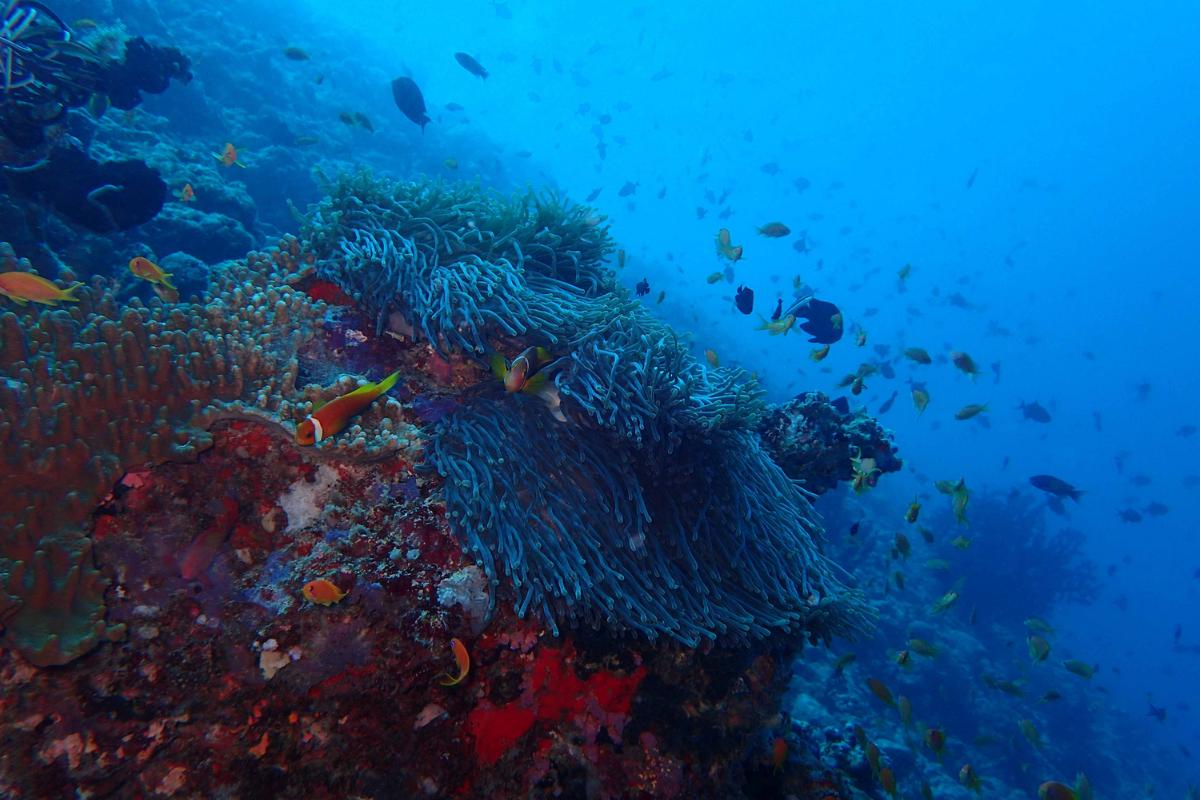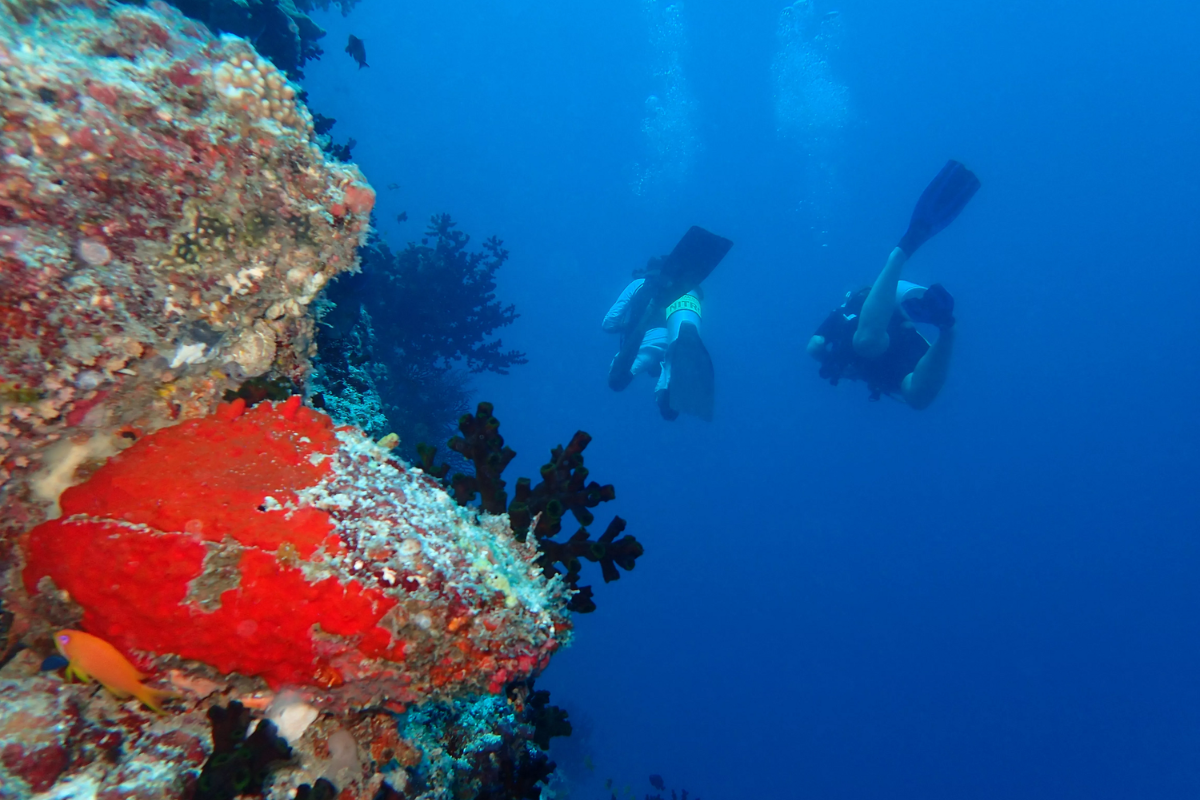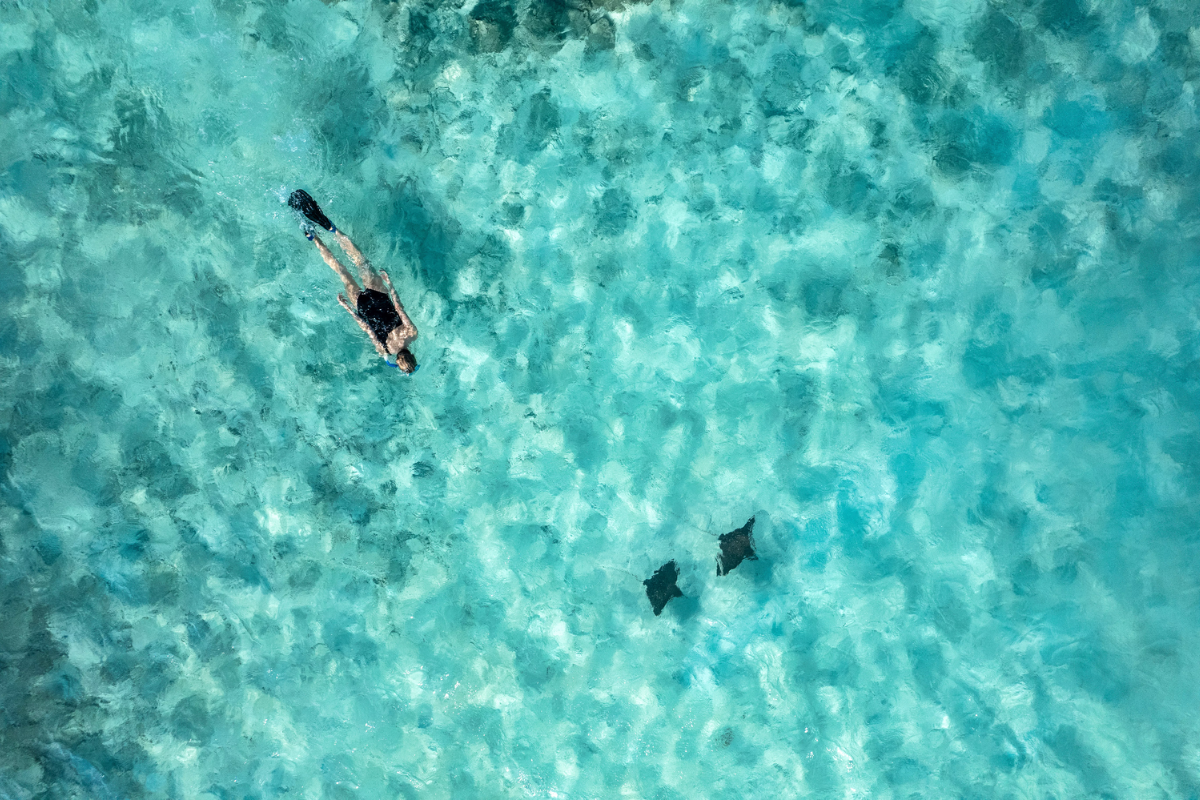Why the Maldives is famous: The coral reef story, Part 3
The Maldives, among its many notable attractions, is famed for its coral reefs. And indeed, these otherworldly wonders make the Maldives what it is: an archipelago nation sustained by the bounty of the sea, where shimmering corals and marine life attract tourists by the thousands, and the encircling atolls shelter balmy beaches from stormy seas.
As such, at The Nautilus, we take great pride in this spectacular natural heritage, and we have a resident marine biologist on our team who heads up all our oceanic endeavours, her expertise ensuring rewarding and enriching experiences for our guests while also ensuring the effectiveness of our conservation efforts.
In this third instalment of our three-part series, our resident marine biologist, Emily Wilson, wraps up her feature exploring the unlikely heroes of the coral reef. Last but not least is the parrotfish.

Insights from our marine biologist:
”Unsung Heroes of the Reef” (Part 3 of 3) by Emily Wilson
Coral reefs, the lively city destination for reef residents, once ubiquitous in the tropical shallow seas, are now under threat by human-induced pressures. As explained in my previous post, predator-prey relationships are out of balance, disturbing the complex food web and causing proliferation of certain species’ populations, as seen with COTS outbreaks. And our oceans are lacking the predatory force of the ravenous giant triton due to the market price of its divine shell.
The reef is glorious yet fragile and sensitive to change; disturbances to the water chemistry can cause algae to grow rapidly. In a changing ocean, every algal grazer is essential to nurture coral growth. And this brings me to our third unsung hero, the lawnmower of the Maldives seas – the parrotfish.

Unsung Hero #3: The Parrotfish
Reef-scaping
One of the most colourful and charismatic fish in the oceans is also responsible for maintaining a clean and healthy coral reef ecosystem. The parrotfish, with its bucked teeth mimicking the tropical bird’s beak, grazes on algae like a cow in a pasture. These and other herbivorous fishes are natural lawnmowers, keeping algae from overgrowing and dominating the reef.
Without this essential landscaping service, aquatic plants would monopolise space at the busy and competitive reef, deeming it impossible for young coral larvae to attach and grow. If too many nutrients persist in the shallow tropical seas, algae can bloom, growing at an exponential rate. And without the parrot fish’s appetite, the corals can become smothered and starved of oxygen. Then, what’s left behind is an altered ecosystem without the complexity to host the wide array of biodiversity expected at our colourful coral reefs.
Coral crunching
Not only do parrotfish consume hearty quantities of algae, but their beaks are strong enough to crunch on corals. In fact, parrotfish spend up to 90% of their time pecking coral.
Previously, it was thought that corallivores (fish that eat coral) weakened the marine structure. Now, new research suggests that the faeces of corallivorous fish (which include the parrotfish, pufferfish, surgeonfish and butterfly fish) circulates beneficial microbes that help corals thrive. It’s not a glamorous subject, but it’s an essential part of the continuation of life at our treasured reefs.
Together, these fish disperse a kind of probiotic around the reef, helping to maintain a healthy ecosystem. What’s more, the coral-crunching activities of the parrotfish redistribute the calcium carbonate in the form of white sand – which makes up our picturesque beaches.
Under threat
These most vibrant and colourful reef-cleaning fishes are vital players in the reef ecosystem. Sadly, they’re also victims to the aquarium trade, especially the beloved blue tang surgeonfish, aka Dory, our favourite forgetful fish from Finding Nemo.
Now it is critical to restore balance and appreciate the magnificence of marine life for the vital role it plays in orchestrating a harmonious and thriving ecosystem.
Join us at our ocean paradise and witness these marine marvels up close, in living colour. Get in touch at [email protected] to start your journey.

